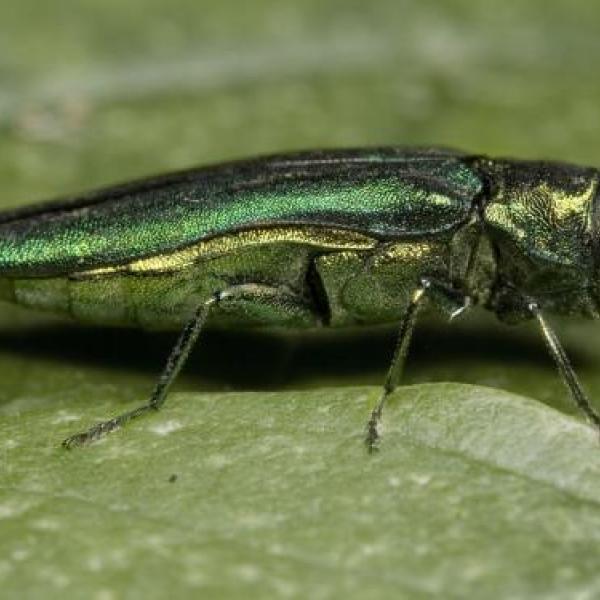
News Source
DURHAM, New Hampshire — A destructive beetle that targets ash trees — known as the emerald ash borer — may have met its match.
Entomologists believe a wasp may be more effective monitoring the spread of the beetle than standard traps.
Morgan Dube, a graduate student in biological sciences and entomologist with the New Hampshire Department of Agriculture, Markets, and Food, says the wasp has the ability to find, sting and paralyze the emerald ash borer.
The wasp called the smokey winged beetle bandit preys on certain beetles, including the emerald ash borer, which was found in the state last year.
New research funded by the New Hampshire Agricultural Experiment Station at the University of New Hampshire indicates the wasp has been found to outperform purple prism traps in detecting presence of the beetle. Researchers think the wasp may be particularly useful in detecting beetles when they are few in number, thereby helping manage their eradication.
Experiment station scientists investigated the wasp in Epsom and Boscawen, both near a known emerald ash borer site in Concord. Specifically, the researchers looked at the seasonality of the wasps, their prey preferences, times of activity, amount of time spent searching and productivity, and the percent of paralyzation of the beetle prey.
UNH scientists found no emerald ash borer beetles among the more than 800 specimens collected. That indicates "it has not reached these areas since other research studies have shown the wasp is very effective in detecting the beetle's presence," said entomologist Donald Chandler, a UNH zoology professor and experiment station researcher who oversaw the project.